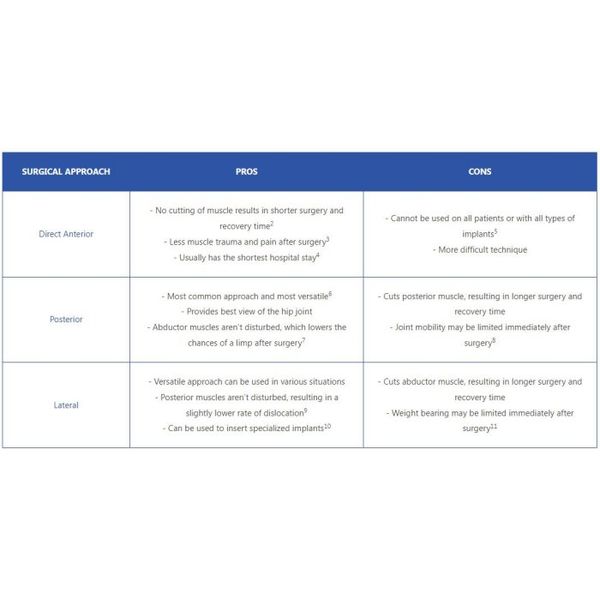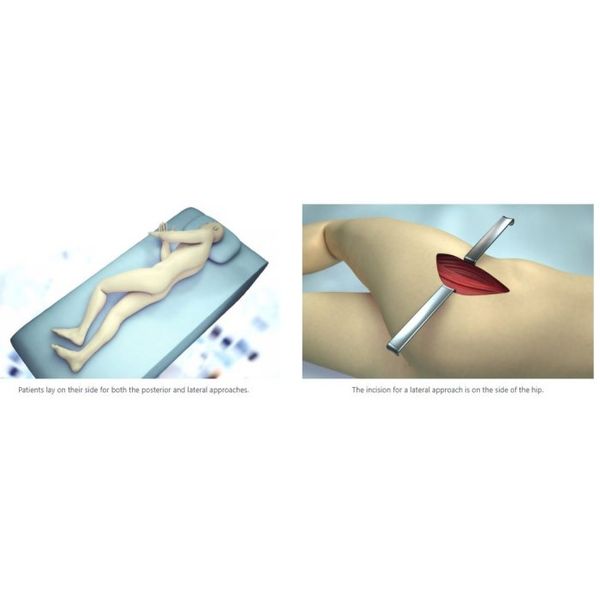

- Home
- Companies
- Intellijoint Surgical Inc.
- Articles
- Surgical Approaches For Hip Replacement ...
Surgical Approaches For Hip Replacement Surgery
In your research on hip replacement surgery, you’ve probably heard about different surgical approaches. The three most common are direct anterior, lateral and posterior. You’re likely wondering about the differences between them and if one method is better than the others.

If you’re still curious about the different surgical approaches, you should discuss this with your surgeon. Each method has its pros and cons, and they share common risks for joint surgeries (e.g. dislocation, infection, fractures, etc.). More important than any approach, though, is the rapport you build with your surgeon. Find someone who you can ask these questions (and more!) and know that they want the best outcome for you.

A direct lateral or anterolateral approach uses an incision directly down the outside of the hip while the patient lays on their side, like the posterior approach. Surgeons may use this method to correct deformities or when using a specialized implant. The disadvantage to this way is the hip abductor muscles that need to be cut to access the joint. Additional cutting increases both the surgical and recovery times.
The posterior approach has been used the longest of the three and is believed to be the most popular. Using this method, the patient lays on their side with the operative hip facing upwards. The surgical incision is near the back of the hip, which gives the surgeon the best view of the hip joint. The downside is that muscles need to be cut and reattached, which adds time to the surgery and recovery. Many surgeons believe it’s the most versatile surgical approach to meet various patient needs. For years, people believed this approach had a higher rate of hip dislocations after surgery, but recent research suggests that every approach has similar dislocation rates1.
In this approach, the patient lays on their back and the surgeon makes their incision at the front of the hip. This allows the surgeon to perform the surgery by working between muscles without cutting them. One of the benefits of this approach is a shorter recovery time because the muscles aren’t damaged during surgery. Some believe it’s a more technically challenging approach, and it can be harder with patients who are either obese or exceptionally muscular.

We can explain the differences, but we can’t say which is the best. There simply isn’t a consensus in the orthopaedic community. It’s a personal decision for each surgeon and if you ask your surgeon, they’ll tell you which is their preferred approach.
Throughout their training, surgeons learn each method and often choose the one they feel most comfortable with. So, the best way for them is what they’re consistently practicing. It’s not worth debating which approach is best, though it does help to know how each approach may affect your recovery.
First, you want to find a surgeon that you’re comfortable with so you can trust that their surgical approach is what they believe gives their patients the best outcomes.

